BeeCause
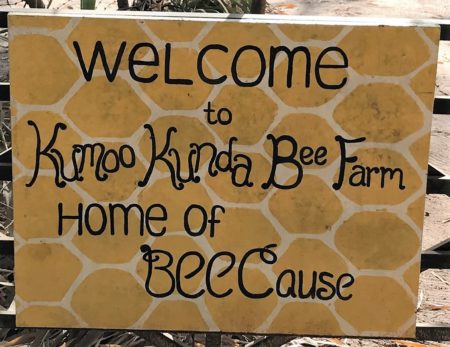 The first two days of the three weeks of in-service training were devoted to beekeeping at Komoo Kunda Bee Farm. This facility was originally started by a Norwegian music school over 30 years ago, and the buildings are all very unique. About a decade ago, the music school closed due to poor relations with the former government.
The first two days of the three weeks of in-service training were devoted to beekeeping at Komoo Kunda Bee Farm. This facility was originally started by a Norwegian music school over 30 years ago, and the buildings are all very unique. About a decade ago, the music school closed due to poor relations with the former government.
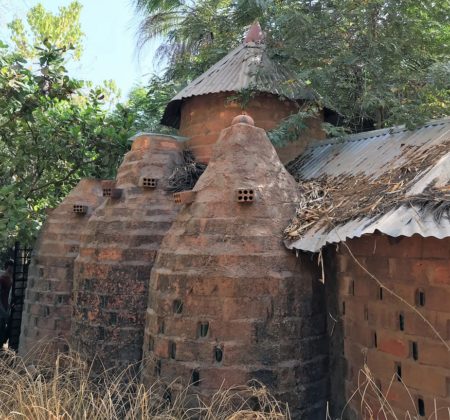
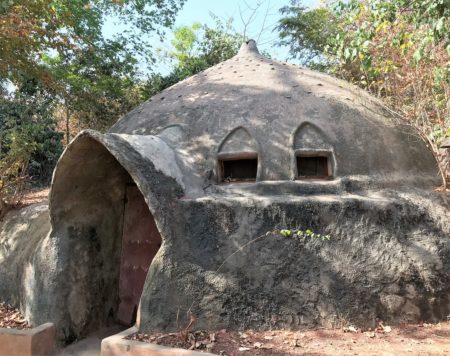
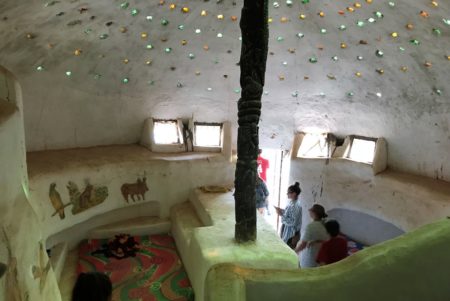
The property is now managed by the West African Beekeeping Association, and is available to Peace Corps, and others in West Africa, to become educated about beekeeping. A large variety of trees were added to the property for the bees to pollinate, to provide shade, and for building materials. There are also opportunities for a PCV to extend for a third year and work at the farm.
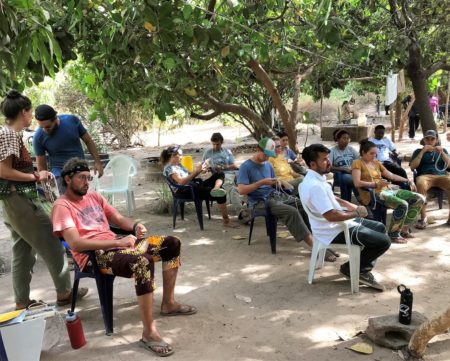
We studied the Apis Mellifera Honey Bee, a very social insect. There are three types of bees in an active healthy colony – one queen, about 500 male drones, and 40,000 sterile female worker bees. The queen can live three to five years, the male drone about six to eight weeks, and the sterile female worker bee only three to four weeks.
The queen lays eggs that will develop into new bees, up to 1000 eggs every day during peak periods. The job of the drone is to mate with a young queen, but they are driven out of the colony during the dearth period. The dearth period is when there is low hive activity, which is the rainy season in The Gambia. The worker bee is a female that cannot lay eggs, is the only bee with stingers, and die after using them. The worker bees do most of the work in the hive, which includes housekeeping, protecting the hive, feeding the queen, drones and larvae, and making wax. They have special baskets on the back of their legs to collect the pollen and nectar that is stored in the honeycombs, and transport propolis, a sticky resin they collect from trees to seal cracks and keep the hive clean.
There can also be fertilized female eggs that will develop into daughter queens, if fed royal jelly. This will happen when a hive is congested, and a new hive needs to be formed. When a daughter queen leaves, she will take some honey, worker bees and a few drones with her to build a new hive. The proportion of bees in a hive is important, and when a beekeeper wants to start a new hive, if they don’t have enough bees, a half size box can be used initially.
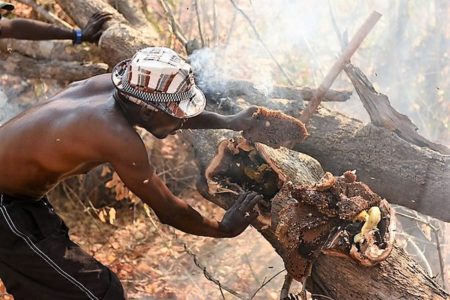
Beekeeping is promoted in West Africa to the traditional honey hunters, because they already have an interest in collecting honey. But unfortunately, a honey hunter can do a great deal of environmental damage. The hive is usually destroyed, killing the queen, and often trees are burned or cut down to access the honey. Peace Corps encourages volunteers to identify traditional honey hunters and educate them about the benefits of beekeeping. Deforestation is a major problem here, so encouraging sustainable honey production can be a win-win for the environment and economic activity. Although, beekeeping is not a full-time occupation, it does require a long-term commitment, and is compatible with farming activities and other occupations.
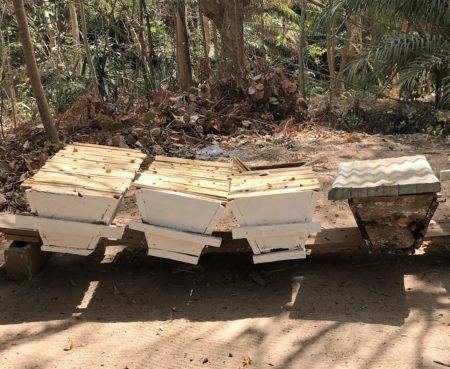
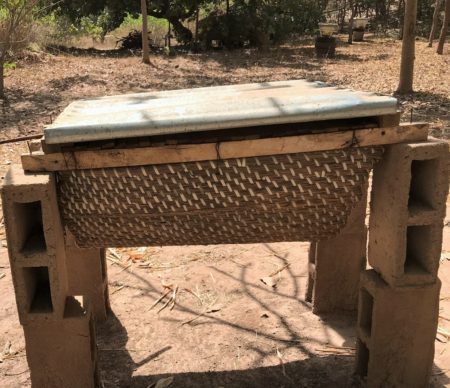
There are two main types of hives used in this area, Kenyan Top Bar (KTB) and Basket Hive. KTB hives are more durable and the most common, but the basket hive is a great alternative when wood is not available. A beekeeper will also need a catcher box to attract a queen bee, to start a hive. The location of the apiary is also important to guarantee success. Access to flowering trees, farm crops, water, shade, and protection from livestock and thieves are factors to consider when setting up a beekeeping operation.
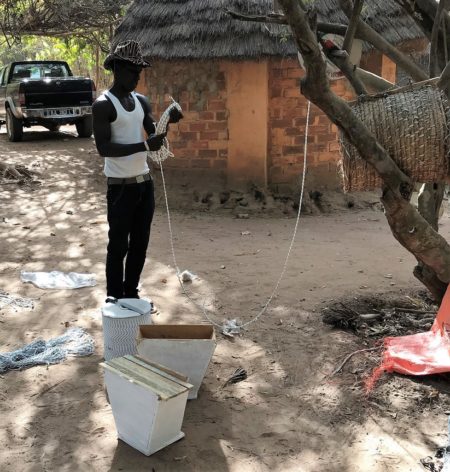
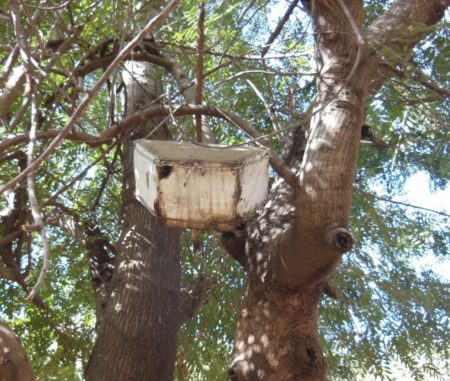
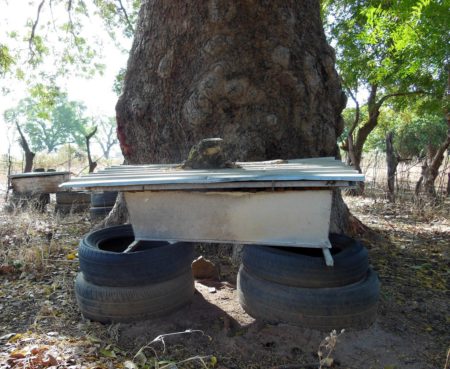
We made catcher boxes during the first day of the BeeCause workshop, to take back to our permanent sites. My counterpart in Farafenni, is already a beekeeper, with three KTB hives. I am pleased I can bring back a new catcher box, and he can teach me more about beekeeping.
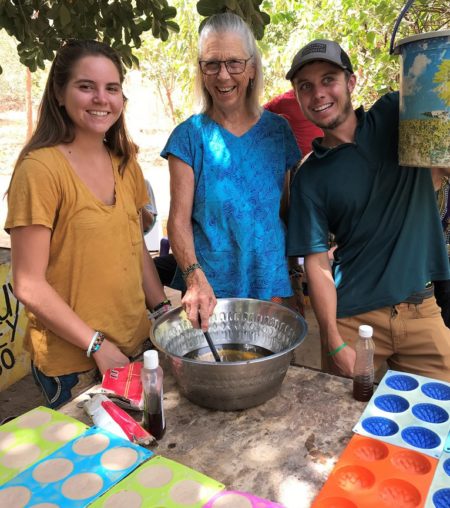
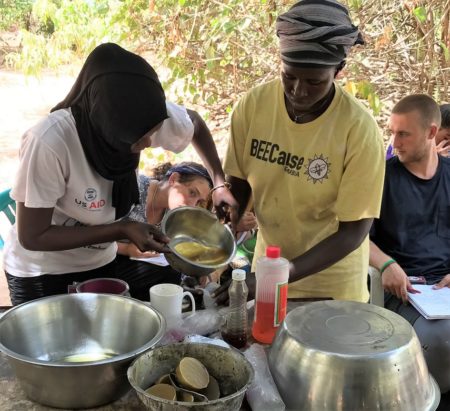
During the second day of the workshop, we learned about the West African beekeeping calendar, when is the best times to harvest honey, and perform hive maintenance. Currently there is not enough honey produced in The Gambia for all of the potential commercial endeavors. Products made from honey and wax are very popular, so promoting beekeeping as a commercial activity can help the environment, benefit farming, create jobs, and produce value added products for local sales and export.
Spending two days at the beautiful Komoo Kunda Bee Farm, was very rewarding for me, because I like hands on learning techniques. In addition of making catcher boxes, we made soap and body butter. The staff did an excellent job demonstrating the production step by step, and setting up the process for us trainees to be successful. The farm also had honey and aged mead for sale.
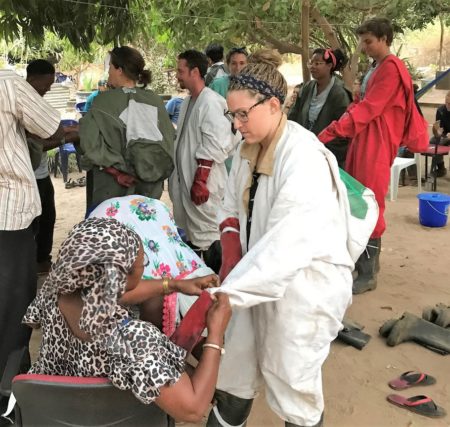
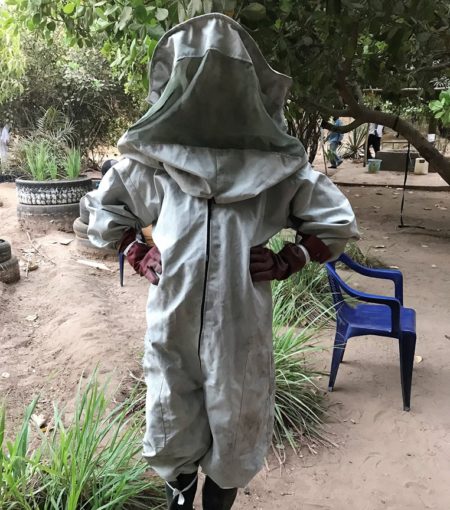
In the evening we put on bee suits and inspected some of the fifty hives at the farm. Unfortunately, I wasn’t able to get any photos while wearing a bee suit. We opened the two different types of hives – KTB and Basket. We saw the different types of cells with pollen and nectar, wax being formed, and harvested some honey. I can see myself pursuing beekeeping further, but I definitely would want to get a bee suit that fits well and easy to work in.
4 thoughts on “BeeCause”
Interesting! Definitely a skill that is useful and beneficial wherever you are in the world.
Wow, Susan – your bee blog is fascinating! So informative. You are doing a great job keeping everyone informed and entertained while you are gaining invaluable skills and doing so much good for others. You’re amazing! ❤️
Dear Susan….Love the bee information. I also like how your training emphasizes the necessity of being in one place that bees are for the long picture…It is bee time of year here as well…and I now have a hive on its second year; unfortunately it is in the outside corner of my bathroom. safe for bees, difficult to access! smart bees.
Great stuff here thanks
Comments are closed.